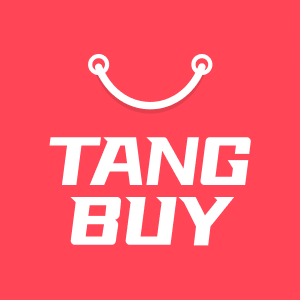A Practical Guide to Cross - Border E - commerce Logistics for Q4 Peak Season

You want your Cross-Border E-commerce business to do well in Q4. But higher duties, taxes, and customs fees can make things hard. These costs often make running your business more expensive. They also make logistics more difficult and upset customers. Tariffs can make return shipping cost more and lower your profits. Many merchants now ask customers to pay for returns because shipping and tariffs cost more. To do well, you need to know local markets. You should change your logistics when needed. You can also use on-demand labour if you need extra help.
Key Takeaways
Start planning logistics early. This helps you avoid problems in Q4. Use demand forecasting tools. These tools help you know what customers want. They also help you manage inventory well. Give customers different shipping choices. This makes them happier and builds trust. Keep learning about duties and taxes. This stops surprise costs and delays. Make your website local for each country. This helps you connect with customers and sell more. Get ready for lots of orders. Hire more staff and use automation to help. Make returns easy for customers. This keeps them happy and saves money. Choose sustainable logistics. This attracts eco-friendly shoppers and follows rules.
Cross-Border E-commerce Strategies
Logistics Planning
You want your Cross-Border E-commerce business to work well in Q4. Planning ahead helps you stop problems and keeps customers pleased. Let’s see how you can make your logistics better.
Inventory
You must know what your customers want before they buy. If you guess demand early, you can tell which items will sell most. You can use smart tools to check trends and outside things. When you keep stock in warehouses near your customers, you can send orders faster. This helps your business stay quick and ready for busy times.
Here’s a simple look at some top strategies:
Strategy | Description |
|---|---|
Demand Forecasting | Use smart tools to guess demand and keep stock right for customers. |
Labour Management | Use robots or extra workers to help when it gets busy and stop staff shortages. |
Transport Optimisation | Use AI to plan delivery routes and stop delays. |
Returns Management | Make returns simple and get products back in stock fast. |
Sustainability | Pick packaging that is better for the planet and fits what customers want. |
Fulfilment
You want orders to get to customers fast and safe. Try using more than one shipping choice. This helps you avoid delays if one way is slow. Give customers tracking so they can see where their order is. If you keep them in the loop, they trust your shop more.
Tip: Telling customers about delivery times and order updates can make them happier.
Duties and Taxes
Handling duties, taxes, and customs fees is a big part of Cross-Border E-commerce. You need to know the rules in each country. Many e-commerce platforms now have tax tools built in. These tools help you follow local laws and stop surprises. If you know about tariffs and fees, you can set better prices and keep costs low. New rules can come fast, so check for changes often.
E-commerce platforms with tax tools help you handle cross-border taxes.
Knowing about changing duties and tariffs helps you stop costly mistakes.
Knowing the rules lets you plan for extra costs and keep your business running well.
Localisation
You want your customers to feel welcome when they shop with you. Localisation means changing your website and content to fit local languages and cultures. If you do this well, you can get more sales. Some businesses have seen sales go up by 20–30% just by changing content. Most shoppers like to buy from sites in their own language. If you skip localisation, you might lose customers.
Good localisation can make sales go up by as much as 70%.
Using the right language makes customers loyal and happy.
Nearly half of European internet users feel left out if a site is not in their language.
Note: Localisation is not just about translation. It is about making your brand feel local and trustworthy.
Q4 Peak Season Overview
Key Dates
You need to know the big shopping days in Q4. These dates can make or break your sales. If you plan ahead, you can get ready for busy times and keep your customers happy. Here’s a quick look at the most important dates for major e-commerce markets:
Date | Event Description |
|---|---|
31st October | Halloween - Significant consumer spending in the UK, estimated at £776 million. |
11th November | Single’s Day - A major global sales event originating from China. |
28th November | Black Friday - One of the biggest dates in the online retail calendar. |
1st December | Cyber Monday - A key shopping day following Black Friday. |
26th December Onwards | Boxing Day/Winter Sales - Opportunity for final Q4 sales boost. |
You should mark these dates on your calendar. Each one brings a rush of orders and new shoppers. If you stock up and prepare your team, you can handle the extra demand.
Demand Trends
Q4 brings a surge in online shopping. You will see more orders than usual, especially around Black Friday and Christmas. Shoppers look for deals and want gifts delivered on time. You might notice that some products sell out fast. Toys, electronics, and fashion items often top the list. If you watch trends and check your sales data, you can spot what’s hot and restock quickly.
Tip: Use last year’s sales numbers to guess which products will be popular. This helps you avoid running out of stock.
You may also see more international orders. Cross-Border E-commerce grows during Q4 as people buy gifts for friends and family in other countries. If you offer fast shipping and clear prices, you can attract these shoppers.
Consumer Expectations
Shoppers want their orders to arrive quickly and safely. During Q4, delivery speed and reliability matter more than ever. If you miss a delivery, you risk losing a customer’s trust. Even one late order can hurt your reputation. People expect updates about their orders and want to track their parcels. You should give clear delivery times and keep your promises.
Timely deliveries are vital during Christmas and New Year. Many shoppers buy gifts, so they need their parcels before the holidays. If you plan your shipping and work with reliable carriers, you can meet these high expectations. Good planning helps you avoid delays caused by labour shortages or busy warehouses.
Note: Fast and reliable delivery keeps your customers happy and loyal. If you prepare well, you can turn holiday shoppers into repeat buyers.
Logistics Risks

Delivery Delays
You might notice that delivery delays happen more often during Q4. Many things can slow down your parcels. New trade rules and higher tariffs make customs checks stricter. This means your packages can get stuck at the border. Sometimes, you face extra fees you did not expect. These problems often show up when everyone is shipping more for the holidays. If you do not plan well, your customers may wait longer for their orders. One late delivery can make a shopper lose trust in your shop. During the holiday season, this can hurt your reputation and your sales.
If you want to avoid delays, always check the latest customs rules and prepare your paperwork early.
Returns
Returns can be a big headache in Cross-Border E-commerce, especially during Q4. You will see more returns than with local orders. Here is what you need to know:
Cross-border e-commerce return rates are about 25%.
Some categories, like clothing and shoes, have even higher return rates.
Domestic return rates stay much lower, even when it gets busy.
When you sell to other countries, returns cost more. You pay for shipping, customs, and sometimes extra fees. If you do not handle returns well, you lose money and upset your customers. For example, if a shopper in Europe sends back a £80 jacket to your UK store, you might pay £24–£32 just to process that return. These costs add up fast, especially if you get lots of returns at once.
Hidden Costs
Hidden costs can surprise you and eat into your profits. You might think you have planned your budget, but extra charges often appear. For example, you may pay for ocean freight to send goods to Europe. When your shipment arrives, you could face port fees, fuel surcharges, and customs charges. These can make your total costs 5–10% higher than you expected. Studies show that high return rates also push up your costs. If you do not plan for these, your profit drops.
Poor logistics planning can make things worse. New trade rules can double your costs, raising them by 30% to 100%. If you miss paperwork or do not check the latest fees, you risk delays and angry customers. You might lose sales and see your profit shrink. Careful planning helps you spot these risks before they hurt your business.
Cross-Border E-commerce Challenges
High Order Volumes
You will notice a big jump in orders during Q4. This rush can feel exciting, but it also brings pressure. Your warehouse might get crowded. Staff may struggle to keep up. If you do not plan, you risk late deliveries and unhappy customers. You can solve this by hiring on-demand labour. Temporary workers help you pack and ship orders faster. Automation tools also speed up picking and packing. You can use order management systems to track stock and spot problems early. Try splitting your stock across different warehouses. This way, you send parcels from the closest location and cut down delivery times.
Tip: Train your team before the rush starts. Well-prepared staff make fewer mistakes and keep things moving smoothly.
Customs and Compliance
Customs rules can change quickly, especially in Q4. You need to stay alert. Many countries now check parcels more closely. Mistakes in paperwork can cause delays or extra costs. You must get your documentation right every time. Use the correct HS codes and clear product descriptions. If you get these wrong, you might pay up to 25% more in tariffs. Customs authorities now see 73% of product categories as tariff-sensitive. This means more checks and higher risks for your business.
Here are some common customs and compliance challenges:
More product categories now face tariffs, making compliance harder.
Customs officers look at parcels more closely, leading to surprise costs.
You must use precise paperwork, including HS codes and product details.
Small errors in documents can lead to big penalties or delays.
You can use digital customs clearance tools to speed up the process. These tools help you avoid mistakes and keep your parcels moving.
Fraud Prevention
Fraud rises during busy seasons. You need to protect your business and your customers. Start by using real-time fraud detection systems. These tools watch every transaction and spot problems fast. Machine learning and AI can find patterns that humans miss. Set strict rules for high-value orders. You can relax these rules later if you see no issues. Local payment methods also help. Shoppers trust familiar ways to pay, and this lowers fraud risk. Work with local partners to spot scams early.
Strategy | Description |
|---|---|
Real-time fraud detection | Watch transactions as they happen to catch fraud quickly. |
Machine learning and AI | Use smart tech to find risky patterns and stop fraud. |
Tighter rules for high-risk buys | Set strict checks for expensive orders, then ease them if all goes well. |
Local payment methods | Offer payment options locals know and trust. |
Regional partnerships | Team up with local networks to spot and stop fraud. |
You can also use CAPTCHA to block bots during peak times. Send detailed data to your fraud provider for better checks. Always start with tough rules for expensive items.
Note: Good fraud prevention keeps your business safe and builds trust with your customers.
Sustainable Logistics

Some people think shoppers only care about fast delivery. But now, many want their orders to be better for the planet. If you run a cross-border e-commerce business, you must care about sustainable logistics. This is not just a new idea. Brands need it to stand out.
Sustainability is now very important for choosing products. More shoppers ask about eco-friendly packaging and green delivery. If you show you care about the environment, you can win loyal customers.
Here are some new trends in sustainable logistics for cross-border e-commerce:
Carbon-neutral shipping: You can pick carriers who balance out carbon from deliveries. Some companies plant trees or use clean energy to help the planet.
Recyclable packaging: You can use boxes and bags that customers can recycle at home. This cuts waste and shows you care about the earth.
Sustainable materials: You can use things like recycled paper or compostable mailers. These choices help lower your impact on the environment.
Tip: Put a note on your website about your green actions. Shoppers like to see you care.
You do not have to change everything right away. Start with small steps. Try using paper tape instead of plastic tape. Offer a “green delivery” choice at checkout. Work with suppliers who care about the planet too. Every small step helps.
If you use green logistics, you can meet the need for eco-friendly products. This gives you an advantage over others who do not care about sustainability. You also get ready for new rules. Many countries now have strict rules for packaging and waste. If you follow these rules early, you will not get fines or delays.
Note: Sustainable logistics is good for the planet, your brand, and your profits.
You can save money over time. Lighter packaging means cheaper shipping. Better routes use less fuel. If you cut waste, you spend less on materials. These savings are big during the busy Q4 season.
So, if you want your cross-border e-commerce business to grow, start thinking green. Your customers and the planet will be happy.
Practical Guide
Inventory Management
Forecasting
You want to avoid running out of stock or having too much left over. Forecasting helps you guess what your customers will buy. Start by looking at last year’s sales numbers. This gives you clues about which products will be popular. Use smart tools to check market trends and see what people are searching for online. These tools can show you real-time data, so you can adjust your stock quickly.
Check your sales history for Q4 to spot patterns.
Use e-commerce platforms that show live inventory numbers.
Watch for changes in customer behaviour and new trends.
If you talk to your suppliers early, you can get better deals and make sure your products arrive on time. Strong relationships with suppliers help you stay ahead of the rush.
Tip: Set up alerts for fast-selling items. This helps you restock before you run out.
Buffer Stock
Buffer stock acts like a safety net. You keep extra products in your warehouse to cover sudden spikes in orders. This is very useful during Q4 when sales can jump overnight. If you have buffer stock, you can fill orders quickly and avoid delays.
Store extra units of your bestsellers.
Split your buffer stock across different warehouses to reach customers faster.
Review your buffer levels every week during peak season.
Buffer stock also helps if there are problems with shipping or customs. You can keep selling even if new stock is delayed.
Technology Integration
Automation
Automation makes your job easier and faster. You can use robots or smart software to pick and pack orders. This cuts down on mistakes and saves time. Automated systems can also handle returns, so you get products back on the shelf quickly.
AI helps you forecast demand and plan your resources. It can choose the best delivery routes and fill out customs forms for you. This means fewer delays and less paperwork.
Note: Automated customs checks help you follow the rules and avoid fines.
Tracking
Tracking lets you see where every order is at any time. You can use live dashboards to watch your stock move from warehouse to customer. This helps you spot problems early and fix them before they get worse.
Use multi-warehouse tracking to keep all your data in one place.
Give customers tracking links so they know when their order will arrive.
Automate inbound processes to speed up receiving and restocking.
Tracking also helps you reduce errors. If you know where your products are, you can avoid sending the wrong item or losing stock.
Warehouse Optimisation
Location
Warehouse location matters a lot in Cross-Border E-commerce. If you place your warehouses close to your main customers, you can deliver faster and save money. You might use several small warehouses in different countries instead of one big one.
Warehouse Strategy | Benefit |
|---|---|
Local Warehouses | Faster delivery, lower costs |
Multi-country Hubs | Easier customs, less risk |
Centralised Stock | Simple management, more control |
Think about where your orders come from most. Place your stock where it will move quickly.
Picking and Packing
Picking and packing is the heart of your warehouse. You want this process to be quick and accurate. Use clear labels and organised shelves to help your team find products fast. Automation can help here too. Robots or conveyor belts can move items to packing stations.
Train your staff to spot mistakes before shipping.
Use barcode scanners to check every item.
Choose packaging that fits the product and protects it during shipping.
Tip: Test your packaging with drop tests to make sure it survives the journey.
If you get picking and packing right, you avoid returns and keep your customers happy.
Last-Mile Delivery

Getting products to customers is the last step. You want this to go well, especially in Q4. Orders increase a lot during this time. If you do last-mile delivery well, customers stay happy. Happy customers buy from you again.
Carrier Selection
Picking the right carrier is important. You need a partner who can deliver during busy times. Some carriers are better for certain places. Some offer good tracking or lower prices. Here are some top last-mile delivery choices for Q4:
Company | Key Features | Rating |
|---|---|---|
UPS | Global coverage, Robust tracking tools, Wide range of shipping options | 4.2/5 |
FedEx | Fast delivery and international reach, Sophisticated shipment management | 4.0/5 |
SF Express | Wide coverage across China & Asia, Competitive rates for e-commerce | 4.0/5 |
Match your carrier to your main markets. If you sell a lot in Asia, SF Express is a good choice. UPS and FedEx are good for global orders. Always check if the carrier can handle lots of orders in Q4.
Tip: Try your carrier’s tracking system before Q4. Make sure it gives real-time updates.
Delivery Options
Giving customers delivery choices helps you stand out. Some want express shipping. Others want standard delivery to save money. You can offer local pick-up points or lockers. These choices help shoppers control their delivery and avoid missed parcels.
Express delivery: Fast but costs more. Good for urgent gifts.
Standard delivery: Cheaper and reliable for most orders.
Local pick-up: Customers collect parcels from a nearby shop or locker.
Scheduled delivery: Shoppers pick a delivery date that suits them.
Show delivery choices at checkout. Customers know when their parcels will arrive. This makes them feel confident to buy.
Note: Always show delivery times and costs before checkout. Surprises can make shoppers leave.
Returns Handling
Returns are common in cross-border e-commerce, especially in Q4. You want returns to be easy for customers and not cost too much for you.
Process
A simple returns process keeps customers coming back. Give shoppers different ways to send items back. Prepaid return labels make it easy. Local drop-off points save time and money. Working with international carriers can get you better prices. Local returns aggregators collect parcels and ship them together.
Here’s how to handle returns well:
Give customers choices like prepaid labels or local drop-off spots.
Work with international carriers for good rates.
Use local returns aggregators to save money and time.
Use technology for tracking and automatic returns.
Team up with logistics providers and customs brokers.
Handle customs duties by classifying returned goods and keeping paperwork right.
Offer support in different languages and send updates on return status.
Set up local return centres to save money and speed up refunds.
Check return data to find problems and make your process better.
If you follow these steps, returns are easier for customers and cheaper for you.
Tip: Automate your returns process. This cuts mistakes and speeds up refunds.
Communication
Clear communication is very important. Tell customers how to return items and what will happen. Use simple words and offer help in their language. Send updates when you get the return and when you give the refund. Keeping shoppers informed builds trust and stops complaints.
Use email or SMS to confirm each step of the return.
Offer live chat or phone support for quick help.
Update your returns policy on your website before Q4.
Note: Good communication can turn a bad experience into a good one. Happy customers come back.
Contingency Planning
Q4 can bring surprises. You need a plan for problems. If you prepare, you avoid delays and keep your business running.
Risk Assessment
Start by finding the biggest risks. Customs delays, lost parcels, and sudden order spikes can cause trouble. Check your supply chain for weak spots. Use real-time data to track orders and spot issues early. Delivered Duty Paid (DDP) models help you avoid customs delays and extra charges. A global fulfilment network lets you move stock quickly if one warehouse has problems.
Tip: Check your risk plan every week in Q4. Update it when new problems come up.
Backup Options
You need backup plans ready. If one carrier fails, use another. If a warehouse is too busy, send orders from somewhere else. Local payment solutions and fraud prevention tools keep checkout working. Offer strong reverse logistics to handle returns if your main system stops.
Here are some smart backup ideas:
Use DDP to avoid customs delays.
Use a global fulfilment network to cut delivery times.
Add local payment and fraud prevention for smooth checkout.
Make global returns easy with good reverse logistics.
Use real-time data for demand forecasting and inventory management.
If you plan ahead, you stay flexible and keep customers happy, even when things go wrong.
Note: Contingency planning is not just for emergencies. It is your safety net for Q4.
Expert Insights
Common Questions
You probably have lots of questions about cross-border e-commerce logistics, especially during Q4. You are not alone. Many business owners ask the same things every year. Here are some of the most common questions you might face:
How do you work out duties and taxes for each country? This can feel confusing. Every country has its own rules, and the costs change often.
What happens if you get the address format wrong? Address formats differ from country to country. If you label a parcel incorrectly, it might get lost or delayed. Customers get upset when their orders do not arrive on time.
Should you show prices in local currencies? Yes, you should. Shoppers like to see prices in their own money. This helps them trust your shop and makes them more likely to buy.
How do you handle customer service for shoppers in other countries? You need to answer questions in the local language. If you do not, customers might feel ignored or confused.
Tip: You can use translation tools or hire local staff to help with customer service. This makes your business feel more welcoming.
You might also wonder about delivery times, returns, and how to keep costs low. These questions come up often, especially when orders increase in Q4.
Operational Advice

You want your logistics to run smoothly during the busiest time of the year. Here are some practical tips from experts that can help you succeed:
Get your paperwork right. Double-check customs forms and product codes. Mistakes can cause delays and extra charges.
Use smart technology. Automated systems help you track parcels and manage stock. You spot problems early and fix them fast.
Train your team before Q4 starts. Well-trained staff make fewer mistakes. They pack orders quickly and answer customer questions with confidence.
Offer clear delivery options. Show delivery times and costs at checkout. Customers like to know what to expect.
Plan for returns. Set up easy return processes. Use prepaid labels and local drop-off points. This keeps customers happy and saves you money.
Choose the right partners. Work with carriers who know your target markets. They help you avoid common problems and deliver on time.
Advice | Why It Matters |
|---|---|
Accurate paperwork | Avoids customs delays and fines |
Speeds up order processing | |
Staff training | Reduces errors and boosts customer service |
Clear delivery info | Builds trust and increases sales |
Easy returns | Improves customer loyalty |
Good partners | Ensures reliable delivery |
Note: You do not have to do everything at once. Start with one or two changes and build from there. Small improvements can make a big difference during Q4.
You can use these tips to make your cross-border logistics easier and more reliable. If you prepare well, you will keep your customers happy and grow your business during the peak season.
You can get better Q4 results if you pick the right logistics model. Here is a simple table:
Model | Description | Ideal For |
|---|---|---|
Direct-to-Consumer via Courier | Send each order straight to the customer with full service | Small or medium DTC businesses |
Fulfilment Centre Abroad | Send lots of stock to fulfilment hubs for last mile delivery | Sellers with many orders |
Consolidated B2B2C | Ship to partners who deliver locally | Brands growing in new regions |
Plan early and use live carrier quotes, automated customs forms, and local checkout. If you guess demand and manage stock well, you stop last-minute issues. Stay ready to change, update your tech, and prepare for a great peak season. 🚀
FAQ
How do you calculate duties and taxes for each country?
You can use online calculators or built-in platform tools. Always check the latest rates on official customs websites. If you get stuck, ask your logistics partner for help.
What should you do if a parcel gets stuck at customs?
Contact your carrier first. They can tell you what documents you need. You should check for missing paperwork or unpaid fees. Keep your customer updated about the delay.
Can you offer free returns for international orders?
You can, but it costs more. Many shops now ask customers to pay for returns. If you want to offer free returns, use local return centres to save money.
How do you choose the best carrier for Q4 peak season?
Look at delivery speed, coverage, and tracking options. Ask for reviews from other sellers. Test the carrier’s service before Q4 starts. Pick one that fits your main markets.
What is the best way to handle high order volumes?
You should hire extra staff or use automation tools. Split your stock across different warehouses. Train your team before the rush. Stay organised to avoid mistakes.
How can you make your logistics more eco-friendly?
Pick recyclable packaging and carbon-neutral shipping. Offer a green delivery option at checkout. Share your eco efforts on your website. Small changes help your brand and the planet.
Do you need to localise your website for every country?
You should localise for your biggest markets. Use local language, currency, and payment methods. Customers trust shops that feel local. Start with your top countries and expand as you grow.
What happens if you get the address format wrong?
Your parcel might get delayed or lost. Always check the local address format before shipping. Use address validation tools to avoid mistakes.

TangBuy: A Smarter Way to Dropship in 2025
If you're looking to stay competitive with dropshipping in 2025, speed and trend-awareness are key. TangBuy helps you stay ahead with real-time product trends, fast fulfilment, and factory-direct sourcing. With over 1 million ready-to-ship items, 24-hour order processing, and seamless Shopify integration, TangBuy makes it easier to test, scale, and succeed in today's fast-moving eCommerce landscape.
See Also
Comprehensive Guide to Online Wholesale Selling in 2025
Detailed Steps for Starting Your Dropshipping Venture in 2025
Essential Advice for eBay Dropshipping Success in 2025
Comparing BigCommerce and Shopify: Which Is Best in 2025?
Complete Guide to Using CJdropshipping Chrome Extension in 2025

